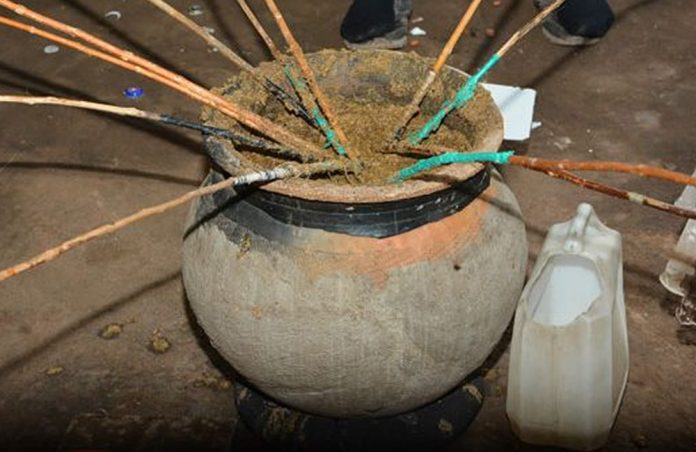If you ask the Itesots of Uganda to host any social function, you can be sure that ajon or malwa will be on the menu. Indeed, whereas many other indigenous Ugandans are steadily upgrading to factory brewed beers and spirits, the Itesots (sometimes called Ateso) continue to sip their ajon with pride.
Itesots do not only love the taste of their locally brewed alcoholic drink, more of them have now mastered the art of brewing ajon compared to the past.
Consequently, even after centuries since the Itesots first brewed it, ajon is still considered a special drink in the districts of Soroti, Kumi, Kaberamaido and Katakwi which make up the Teso region and is spreading to other places like Kampala, Uganda’s capital. A peasant in Teso and a university professor from the Teso region both revere ajon equally.
It is said that around 1000 AD, while migrating southwards, the Nilotics (who include the Acholi, Langi, Ateso, Alur, Kumam and others) reached present day Karamoja. The older members of the group could not proceed and their youthful colleagues abandoned them and most of their herds of cattle, goats and sheep. Those who stayed came to be called the Karimojong from the word akarimojong (the tired ones).
The younger, energetic group (which came to be called the Itesot) took to cultivation in addition to animal rearing. Moses Emuron, a geography schoolteacher in Jinja, says that crops like groundnuts and millet quickly became staple food for the Itesot and with time, this group found another use for the millet. They made ajon.
Ajon still remains a premier drink among the Nilotics and one of the few surviving traditional alcoholic drinks in Uganda that have stood the test of time. Others are tonto in Buganda, Bunyoro, Tooro and some parts of Ankole and omuramba in Kigezi (among the Bakiga). Although tonto and omuramba are still brewed, they are served mostly at cultural functions where they are a pre-requisite.
On the other hand, ajon has resisted the radical modernization that is sweeping through the new Uganda. According to some Itesots, ajon is an affirmation of the sanctity of tradition in the face of modern day ‘civilization’ trends, as the drink is enjoyed by both the old and the young with pride. It is common to find a Ugandan district chairperson sharing a round of ajon with a group of locals.
Brewing ajon
If you thought that Africans were not civilized or had no scientific knowledge what so ever before they were visited by Europeans and Arabs, think again. Africans have used millet to make alcoholic drinks through complex processes for ages. For millet ajon, the process begins by mixing millet flour with water to make it smooth and solid. It is then buried underground for about a week to allow it to ferment.
After seven days of fermentation, the sour mass is recovered and roasted at very high temperatures until it turns black. This is followed by sun drying, which normally takes about two days. It is then put in a drum filled with water so that the bad stuff floats and is filtered off. At this stage, yeast is added for two consecutive days. This turns the sour mixture sweet, as though sugar has been added to it. After another couple of days, it is ready to serve.
Ajon made from maize flour goes through more or less the same process, the only difference being that fermentation is done in a bucket for about three days and then the flour is fried until it turns black, after which it is cooled and stored in a drum for two days. To serve ajon, the black powder is poured into a pot and hot water is added to it at intervals while the patrons drink with long straws from the same pot.
Anthony Eumait, a musician Teso says that whereas many other Ugandan communities’ parents sat by fireplaces to tell inspirational stories to their children in the past, families in Teso convened to sip ajon. Eumait adds that since hot water was added to the ajon pot regularly, there was no need for a family, clan or tribe to gather around a fireplace.
They instead gathered around one big pot of ajon, and would share it using a single drinking straw to show unity and closeness. “This was where tales and fables were told to motivate youngsters.”
Godfrey Mwanika, an Itesot living in Kampala, says that unlike some Bantu communities where people use individual calabashes to drink tonto, the Ateso and other Nilotic communities share a single pot of ajon no matter how small.
Susan Akurut, who has been brewing ajon in Jinja for over a decade, says that the drink has virtually remained unchanged over time, except for a few alterations (like the use of maize flour which is popular amongst the Bagishu and the use of numerous straws rather than a single one to control orally propagated diseases).
She also points out that ajon brewing has undergone some changes, especially among the Itesots who have migrated to the central region of Uganda where they form drinking associations. “Itesots with common interests come together and pay membership and subscription fees to facilitate their drinking groups. Different activities are undertaken, including the organization of group parties, renovating and giving a face-lift to their pub, among others.”
Akurut has another secret for you; “Ajon is no longer a preserve of communities originally from the northern and eastern regions of Uganda but a national drink, judging by the popularity it has gained in all regions of the country. Go to Mbarara (chiefly inhabited Banyankore), Rukungiri (mainly Bakiga and Bahororo), Masaka (mainly Baganda), Kampala (Uganda’s capital) and Jinja (mainly Basoga) and you will agree with me,” she boasts.
Indeed, Mama Muhumuza, a Munyankore, owns a malwa (ajon) pub in Kibuli, a Kampala suburb. Mama Muhumuza says she did not join the malwa business only for financial reasons but because she also loves the drink itself. “I have been drinking ajon since I was ten. A good childhood friend of mine, Betty Akello introduced me to drinking ajon,” she says.
Moses Emuron attributes this precedent to the presence of many people from the Teso region in Uganda’s security agencies, especially Uganda Police, who are deployed in other parts of Uganda and their love for ajon, regardless of where they live. “Anywhere you can find a police barracks, you will find several malwa pubs established nearby,” he explains.
Critics of ajon, however, shun it on health grounds. They cite half-boiled water as an ingredient. They also mention the possibility of disease transmission through sharing drinking straws and the bad shelter and sewage systems synonymous with most ajon pubs in Uganda.
It is not uncommon to meet drunkards urinating any where near their pub. Like most Ugandan bars of these times, virtually all ajon bars/pubs play very loud music, especially the Congolese Lingala genre, for patrons who turn to dancing when they become tipsy.










